#MacabreHistory
Text
The Chilling Practice of Body Snatching
In the 18th and 19th centuries, the demand for fresh cadavers in the field of anatomy led to a macabre practice: body snatching. Grave robbers, known as "resurrectionists," would exhume freshly buried corpses under the cover of darkness, selling them to medical schools for dissection. This ghastly trade in human remains continued until the Anatomy Act of 1832, which finally put an end to the grisly practice. Today, the stories of body snatchers serve as a chilling reminder of the lengths to which people will go in the name of science and progress.
2 notes
·
View notes
Photo
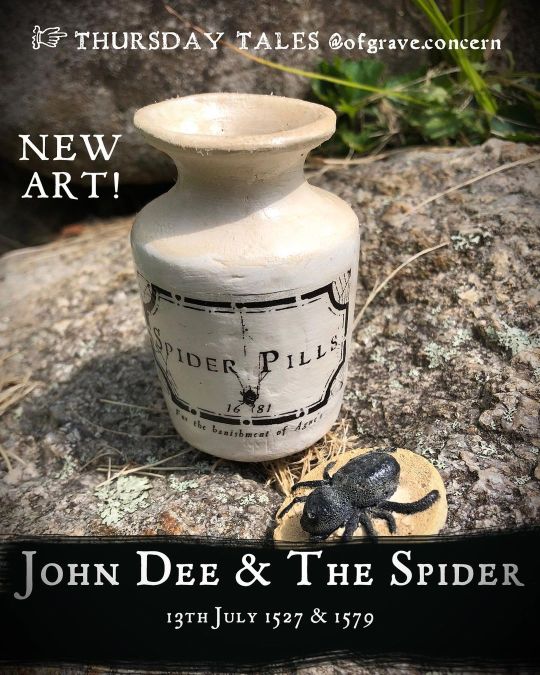
13th July 1527, birth of Anglo-Welsh Enochian magician, alchemist, occult philosopher and astrologer Dr John Dee, court astronomer and advisor to Queen Elizabeth I. As owner of one of the largest libraries in England at that time, Dee amassed a wealth of knowledge upon alchemy, sorcery, Hermetic philosophy and astrology; and attempting to communicate and summon angels with what he believed to be the universal occult language of Enochian. In 1564, Dee wrote ‘Monas Hieroglyphica’, detailing his view of a cosmic harmony, alongside detailing his use of astrological and alchemical symbols. For these activities Dee was arrested multiple times, but managed to evade prosecution, the first being in 1555, for "calculating", and then treason for his horoscopes of Queen Mary, and her half sister Princess Elizabeth. Later he would serve as Elizabeth’s court astronomer and advisor, advising the creation of a "British Empire", a term coined by him. In his youth Dee had been a student of Dutch physician, mathematician, cartographer, philosopher, and instrument maker Gemma Frisius. Another of Frisius’ students was the founder of modern human anatomy Andreas Vesalius, author of De humani corporis fabrica (On the Fabric of the Human Body), published in 1543. On the same day in 1579 (13th July), John Dee’s eldest son physician and alchemist Arthur Dee was born, who served as physician to both Tsar Michael I of Russia and to King Charles I of England. In 1629, Arthur Dee wrote ‘Fasciculus Chemicus’, a collection of writings upon alchemy and its application. The work was translated from Latin into English by Elias Ashmole in 1650, sparking a reemergence of alchemy and esoteric interest. (Continued in comments). #thursdaytales #alchemyart #alchemists #alchemist #alchemical #spiderart #historyofmedicine #folkmedicine #medicinebottle #darkacademia #darkarts #darkacademiaaesthetic #16thcentury #johndee #astrologyart #witchart #witchartwork #historymysteries #weirdhistory #macabrehistory #hiddenhistory #historicalstory #witchcrafthistory #witchyhistory #witchhistory #jamesvi #witchcraftblog #historyofwitchcraft #witchcrafthistory #seventeenthcentury #kingjames https://www.instagram.com/p/CgR_fdIOPLp/?igshid=NGJjMDIxMWI=
#thursdaytales#alchemyart#alchemists#alchemist#alchemical#spiderart#historyofmedicine#folkmedicine#medicinebottle#darkacademia#darkarts#darkacademiaaesthetic#16thcentury#johndee#astrologyart#witchart#witchartwork#historymysteries#weirdhistory#macabrehistory#hiddenhistory#historicalstory#witchcrafthistory#witchyhistory#witchhistory#jamesvi#witchcraftblog#historyofwitchcraft#seventeenthcentury#kingjames
1 note
·
View note
Video
youtube
#QueenofSpades 🎃 The Haunting Tale of the Queen of Spades: Halloween's Enigmatic Monarch 👑🃏🌙 Step into the eerie realm of 'Enchanted Halloween' and witness the enigmatic legend of the 'Queen of Spades.' 🌙✨ On this sacred night, a shadowy figure emerges - the spectral monarch, the Queen of Spades herself, a ruler of the macabre. Adorned in a regal black gown, her pale visage and piercing eyes hold a mystique that chills the bravest of souls. She is the embodiment of Halloween's eerie elegance. But behind her dark majesty lies an even more haunting legend. The Queen of Spades is said to have made a fateful pact with the spirits of the underworld, gaining her dominion over the chilling mysteries of All Hallows' Eve. In return, she eternally roams the night, gathering lost souls and playing a wicked game of fate. 👑🃏 Witness her spectral court, and marvel at the chilling game of cards that seals the fate of those who cross her path. Her power is unrivaled, her legend eternal. Join us as we delve into the enigmatic and spine-tingling tale of the 'Queen of Spades,' a Halloween legend that has sent shivers down the bravest of spines. #EnchantedHalloween #QueenOfSpades #HalloweenLegend #MacabreMonarch #EerieElegance #HauntedRoyalty #AllHallowsEveMagic #HalloweenAnimation #SpectralGame #FatefulPact #SpookyMonarchy #HalloweenMagic #HauntedMystery #HalloweenEnthusiasts #HauntingLegends #HalloweenFans #EerieStories #SpookyMyths #EnchantedTales #EtherealBeauty #MacabreHistory #GhostlySpectacle #UnearthlyCharm #AllHallowsEve
0 notes
Text
The Disquieting World of Victorian Post-Mortem Photography

In the Victorian era, the art of post-mortem photography held a morbid fascination for many. Families, stricken by the loss of a loved one, would often commission a final portrait to immortalize their dearly departed. These unsettling images, featuring the deceased in lifelike poses, now serve as a chilling reminder of a time when death was ever-present, and memento mori took on a ghastly form. So, as you gaze upon these eerie relics, remember that they were once cherished keepsakes, tokens of love and loss in a bygone age.
If you like horror stories, please follow and leave a comment. Check out my book - Nightmares: Blood and Bones: A Collection of 10 Gothic Horror Short Tales - Kindle edition by Graves, G.W. Literature & Fiction Kindle eBooks @ Amazon.com.
Yours in horror,
G.W Graves
2 notes
·
View notes
Text
The Gruesome Truth Behind Victorian Mourning Jewelry
In the days of Queen Victoria, mourning the dead was a somber and elaborate affair. One such macabre practice involved the creation of mourning jewelry, often incorporating locks of hair from the deceased. These eerie mementos were worn by the grieving as a way to keep their loved ones close, even in death. Rings, brooches, and necklaces adorned with braided hair, sometimes even set behind glass, served as a constant reminder of mortality, the transience of life, and the ever-present shadow of death.
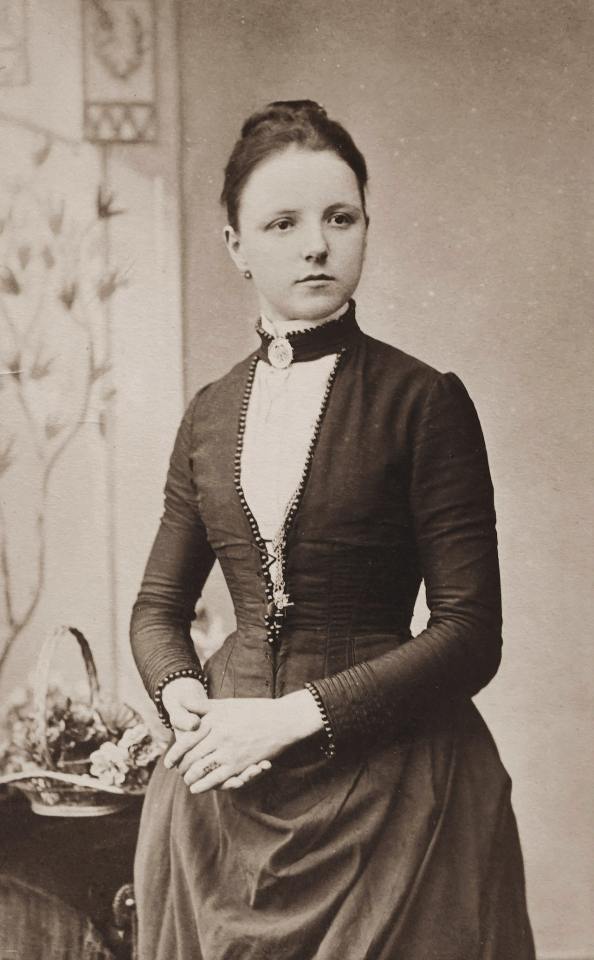
If you like horror stories, please follow and leave a comment. Check out my book - Nightmares: Blood and Bones: A Collection of 10 Gothic Horror Short Tales - Kindle edition by Graves, G.W. Literature & Fiction Kindle eBooks @ Amazon.com.
0 notes
Text
The Sinister Story of the Poisoner's Handbook
In the early 20th century, a chilling tome emerged from the shadows – the Poisoner's Handbook. This sinister manual detailed the properties and effects of various toxic substances, providing would-be poisoners with a wealth of deadly knowledge. As the art of murder by poison grew in popularity, so too did the notoriety of this horrifying book. Today, the Poisoner's Handbook serves as a grim reminder of humanity's capacity for evil and the lengths to which some will go to achieve their malevolent ends.
0 notes
Photo
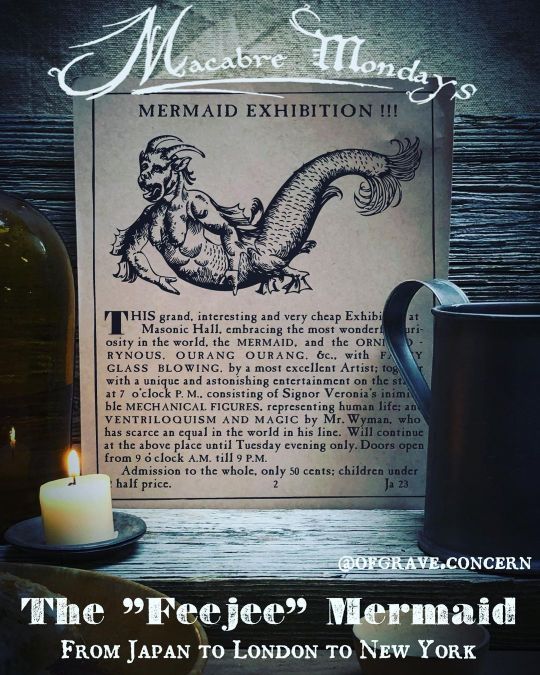
In 1842, American promoter and showman P. T. Barnum, introduced his first major hoax: a creature with the body of a monkey and the tail of a fish known as the "Feejee" mermaid. By the time Barnum was exhibiting the ‘mermaid’, it already had had a long life, and mythology. In one version of its origin, in 1822 an American captain named Samuel Barrett Eades rescued the crew of a Dutch merchant ship, aboard the ship was the mermaid, the Dutch had bought it from Japanese sailors, who claimed they had caught it. Eades bought the mermaid from the Dutch, and took it to England, where he set up a display in a London coffeehouse, naming it the "Remarkable Stuffed Mermaid"; where it was an instant success, the entrance fee of a one shilling happily paid. For the next 20 years the mermaid vanishes from history until it reappears again in the early 1840’s, where it is bought from Eades son by Moses Kimball, the proprietor of the Boston Museum; and friend of P.T. Barnum. Two years later in July 1842, newspapers announced the arrival in New York of Dr. J. Griffin, a member of the British Lyceum of Natural History, who had brought a mermaid which was caught in the Feejee Islands in the South Pacific, to be shown to the press. Of course the mermaid was the same one bought by Kimball, and Dr. J. Griffin, and the British Lyceum of Natural History, were both inventions of Barnum’s in order to create a spectacle for his exhibition of the mermaid. All images are based upon historical depictions of mermaids from the 16th century to Barnum’s exhibition in the 1840’s. They are for sale on the mythology section of the website. www.ofgraveconcern.com/mythololgy Follow @ofgraveconcern for a new macabre tale every Monday, and posts throughout the week of the gothic, strange and macabre. #barnumandbailey #barnum #phineastaylorbarnum #hoax #feejeemermaid #mermaidart #mermaidartwork #mermaidartist #coffeehouses #bostonmuseum #naturalhistory #naturalhistorymuseum #cryptid #cryptids #macabrehistory #mermaidhistory #interestingfacts #historylovers #circus #merman #mermaid #museum #interestingfinds #interestingarts #ofgraveconcern #ptbarnum #feejee #folklore #folkloreart #historical https://www.instagram.com/p/CN2oIbpHh9W/?igshid=1mhok3crjmy7b
#barnumandbailey#barnum#phineastaylorbarnum#hoax#feejeemermaid#mermaidart#mermaidartwork#mermaidartist#coffeehouses#bostonmuseum#naturalhistory#naturalhistorymuseum#cryptid#cryptids#macabrehistory#mermaidhistory#interestingfacts#historylovers#circus#merman#mermaid#museum#interestingfinds#interestingarts#ofgraveconcern#ptbarnum#feejee#folklore#folkloreart#historical
17 notes
·
View notes
Photo
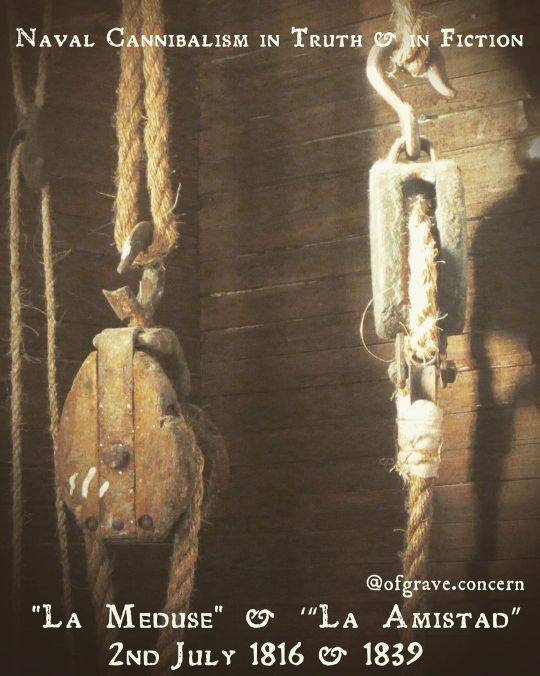
2nd July 1816, the French frigate "La Méduse", under the incompetent captaincy of the Viscount of Chaumareys, runs aground at the Bank of Arguin off the coast of present-day Mauritania. The forced execution of 400 passengers becomes a panic, with 151 men forced to take refuge on an improvised raft. The raft drifts in the open sea for the next 13 days amidst horrific scenes of riots, murder, drowning by storms, madness, suicide, starvation and eventual cannibalism. After 13 days the raft is discovered with 15 people barely alive. News of the tragedy became widespread with the horrific tales becoming sensationalised through the accounts of the rafts survivors. The scene was immortalised by the French Romantic painter Théodore Géricault in his ‘The Raft of the Medusa’, completed in 1819. 2nd July 1839. Mende Slaves led by Sengbe Pieh aboard the Spanish schooner ‘La Amistad’ revolt and secure their freedom, after jokingly being told by the ship’s cook that they were to be "killed, salted, and cooked". Pieh was the first to unshackle himself and led the rest of the slaves to take the ship, killing both the captain and the cook. Sailing to the east coast of the United States, they were seized by the US ship ‘Washington’. Imprisoned in New Haven Connecticut, their case became a key legal debate in the early fight for abolition. In 1841, the international case known as ‘United States v. The Amistad’, ruled in their favour, and they were freed. You are cordially invited to follow @ofgrave.concern for more dark tales from history, and associated historically inspired art. #darkhistory #theraftofthemedusa #lameduse #navalhistory #theodoregericault #théodoregéricault #macabre #macabrehistory #cannibalism #darkstories #shipwreck #laamistad #slavery #sengbepieh #abolition #abolitionist #19thcentury #19thcenturyhistory #seahistory #sailinghistory #slaveship #gothictales #historicalstory #historicaltales #historystory https://www.instagram.com/p/CQ1MkpnF5MM/?utm_medium=tumblr
#darkhistory#theraftofthemedusa#lameduse#navalhistory#theodoregericault#théodoregéricault#macabre#macabrehistory#cannibalism#darkstories#shipwreck#laamistad#slavery#sengbepieh#abolition#abolitionist#19thcentury#19thcenturyhistory#seahistory#sailinghistory#slaveship#gothictales#historicalstory#historicaltales#historystory
4 notes
·
View notes
Photo

7th August 1560, birth of Hungarian countess Elizabeth Báthory, claimed to have ordered the torture, murder and mutilation of hundreds of girls and young woman between 1590 and 1609. The actual number is unknown, however one witness claimed to have seen the number of victims recorded in Bathory’s own handwriting as 650. Found guilty at her trial. It was believed that her public execution would bring disgrace to Transylvania, Instead she was immured in a windowless room in Čachtice Castle, dying four years later. Later folklore involves the stories of her bathing in the murdered girl's blood, although this was never claimed during her trial. Although the drinking of blood (especially the blood of those executed) was thought to transfer their energy and spirit, the legend of Elizabeth Báthory’s blood bathing may have originated with her epilepsy, and the common treatment of the period; in which blood from a non epilepsy sufferer was rubbed onto the lips, alongside pieces of skull. Bottles shown are handmade from casts taken from actual 18th and 19th century medical bottles with original artwork inspired by actual macabre historial medicines. They can be found for sale at www.ofgraveconcern.com/apothecarybottlesandjars You are invited to follow @ofgrave.concern for more dark tales of history, and inspired macabre art. #elizabethbathory #elizabethbáthory #serialkillers #serialkiller #murderesses #transylvania #hungarianhistory #cachtice #cachticecastle #vampiress #bathinginblood #darkhistory #gothictales #macabre #macabrehistory #16thcentury #16thcenturyhistory #grusome #gruesome #gruesomehistory #historystory #historicaltales #historicalstory #medicinebottle #ceramicarts #historyofmedicine #medicinehistory #folkmedicine #bottleart #bottleartwork https://www.instagram.com/p/CSR3fCXnoML/?utm_medium=tumblr
#elizabethbathory#elizabethbáthory#serialkillers#serialkiller#murderesses#transylvania#hungarianhistory#cachtice#cachticecastle#vampiress#bathinginblood#darkhistory#gothictales#macabre#macabrehistory#16thcentury#16thcenturyhistory#grusome#gruesome#gruesomehistory#historystory#historicaltales#historicalstory#medicinebottle#ceramicarts#historyofmedicine#medicinehistory#folkmedicine#bottleart#bottleartwork
1 note
·
View note
Photo

27th January 1591, Scottish schoolmaster Dr. John Fian is burned for witchcraft during the North Berwick witch trials. Lasting two years, during which 100 people were accused and tortured, the trials were the first major Scottish witchcraft persecution. They had begun after the Scottish King James VI, had sailed to Copenhagen to marry the Danish Princess Anne. Upon their return to Scotland the ship faced strange storms, that convinced the Danish Admiral that the storms were unnatural, and had been summoned into existence by witchcraft. Fian was accused of sorcery and confesed after torture of having a compact with the devil. He was then strangled and burnt on this day. The case was reported in a pamphlet published in 1591, called ‘Newes from Scotland, Declaring the Damnable Life of Dr. Fian, a Notable Sorcerer’. The pamphlet was further published in 1597, as part of King James VI’s dissertation on necromancy titled ‘Daemonologie’. It has been estimated that in Scotland between 1560 to 1707, 3,000 to 4,000 accused witches may have been killed. 29th January 1594, Scottish mathematician, physicist, and astronomer John Napier dedicates his work "Plaine Discovery of the Whole Revelation of St. John" to King James VI. It is ironic therefore due to the fact that Napier himself was accused by his neighbours of alchemy, and necromancy, the same dark arts that James VI’s work Daemonologie’ would highlight. Napier it was said would travel with a black spider he kept in a box, and also a rooster he had covered in soot to colour it black. In his work of this year, Napier predicted that the end of the world would occur in 1688 or 1700. Continued in the comments. #witchart #witchartwork #historymysteries #weirdhistory #macabrehistory #hiddenhistory #historicalmysteries #darkhistory #oddhistory #historicalstories #historicalstory #witchcrafthistory #witchyhistory #witchcraft #witchtrials #scottishhistory #houseofstuart #scottishwitches #witchhistory #jamesvi #16thcentury #17thcentury #witchcraftblog #historyofwitchcraft #witchcrafthistory #darkacademia #seventeenthcentury #kingjames #stuarts #witchcraft https://www.instagram.com/p/CKrNBdoHXAZ/?igshid=1ljw1cy2o9jhx
#witchart#witchartwork#historymysteries#weirdhistory#macabrehistory#hiddenhistory#historicalmysteries#darkhistory#oddhistory#historicalstories#historicalstory#witchcrafthistory#witchyhistory#witchcraft#witchtrials#scottishhistory#houseofstuart#scottishwitches#witchhistory#jamesvi#16thcentury#17thcentury#witchcraftblog#historyofwitchcraft#darkacademia#seventeenthcentury#kingjames#stuarts
2 notes
·
View notes
Photo

So which historical figure connects Pocahontas to Elizabeth Bathory? Did you guess it? Don't worry if you didn't, it's a strange and unexpected connection. 6th January 1580, birth of English explorer John Smith, leader of the Virginia Colony and one of the establishers of the colony at Jamestown, Virginia. (The Jamestown settlement would be destroyed by a fire on 7th January 1608). Smith also became the first English explorer to map the coast of New England. Smith recorded in 1616, that nine years previously in December 1607, he was captured by the Powhatan Indians, and met their chief, his life being spared by the chief’s daughter Pocahontas. In his earlier life Smith fought in Hungary against the Turks, legend says that he dueled and killed three Ottoman challengers in single-combat. For his service he was knighted by the Prince of Transylvania Sigismund Báthory, a relative of the "Blood Countess" Elizabeth Bathory. #historymystery #historymysteries #newenglandhistory #johnsmith #jamestownsettlement #strangehistory #weirdhistory #macabrehistory #hiddenhistory #historicalmystery #historicalmysteries #pocahontas #powhatan #ottamanempire #transylvanian #16thcentury #elizabethbathory #countessbathory #darkhistory #oddhistory #jamestown #jamestowndiscovery #historicalstories #historicalstory https://www.instagram.com/p/CJ3gxV8nq9p/?igshid=84th3a6wm2yn
#historymystery#historymysteries#newenglandhistory#johnsmith#jamestownsettlement#strangehistory#weirdhistory#macabrehistory#hiddenhistory#historicalmystery#historicalmysteries#pocahontas#powhatan#ottamanempire#transylvanian#16thcentury#elizabethbathory#countessbathory#darkhistory#oddhistory#jamestown#jamestowndiscovery#historicalstories#historicalstory
2 notes
·
View notes
Photo

18th September 1806, death from gigantism of Patrick Cotter O'Brien, first recorded person to stand at a height of eight feet, known as the ‘Bristol Giant’ and the ‘Irish Giant’, alongside fellow giant and performer Charles Byrne, who also claimed to be an O'Brien. Dying on this day, O'Brien stipulated in his will that his eight foot four inch casket was to be encased in lead, and buried in twelve feet of solid rock to prevent his remains being exhumed by body snatchers and sold for scientific investigation. His reasoning was due to the fate of fellow giant Charles Byrne who upon his death in 1783, had specified that his body be encased in a lead coffin and buried at sea to avoid the same fear. Byrne’s body however was snatched on its way to the coast, allegedly by body snatchers in the employment of famed anatomist John Hunter, who displayed Byrne’s skeleton at his anatomy theatre and museum in Great Windmill Street, Soho, London. Byrne’s skeleton remains on display at the Royal College of Surgeons in London despite public pressure to honour Byrne’s 200 year wish to be buried at sea. All art shown can be found on the website: www.ofgraveconcern.com/steampunkscienceandanatomy For more dark tales from history, and inspired art please follow @ofgrave.concern #regencyera #regencygothic #vintagegothic #darkillustration #historymystery #historymysteries #strangehistory #weirdhistory #macabrehistory #darkhistory #historicalstories #historicalstory #gothicliterature #darkillustration #illustrationartwork #historicalillustration #macabreillustration #gothichistory #gothicillustration #gothicbeauty #vintageaesthetic #steampunkstyle #anatomy #irishgiant #regencygothic #diedonthisday #bodysnatcher #bodysnatchers #historyofanatomy #anatomyart https://www.instagram.com/p/CT-RzFkFjl_/?utm_medium=tumblr
#regencyera#regencygothic#vintagegothic#darkillustration#historymystery#historymysteries#strangehistory#weirdhistory#macabrehistory#darkhistory#historicalstories#historicalstory#gothicliterature#illustrationartwork#historicalillustration#macabreillustration#gothichistory#gothicillustration#gothicbeauty#vintageaesthetic#steampunkstyle#anatomy#irishgiant#diedonthisday#bodysnatcher#bodysnatchers#historyofanatomy#anatomyart
0 notes
Photo
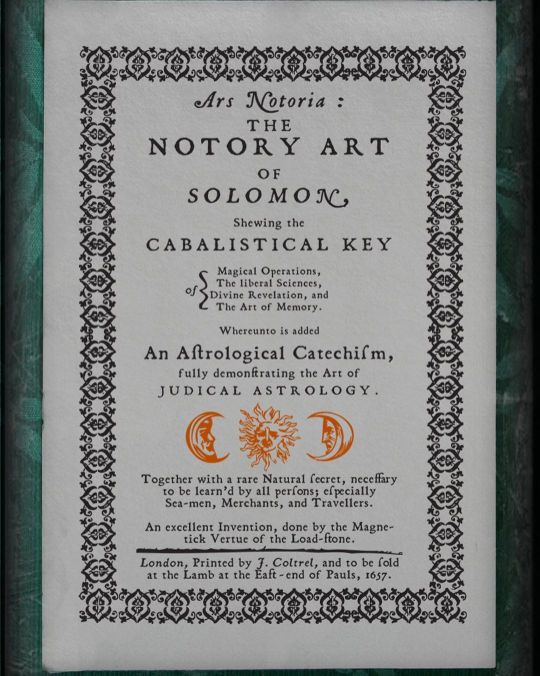
14th September 1486, birth of German polymath, physician, and occult writer Heinrich Cornelius Agrippa von Nettesheim, one of the major figures of the Occult Renaissance. Writing in his major work ‘De occulta philosophia libri tres’ (Three Books Concerning Occult Philosophy), published between 1531 and 1533; Agrippa formulated a vision of magic whereby the natural world combined with the celestial and the divine. The book was a major influence on fellow Occult Renaissance figures such as Giordano Bruno and John Dee. Agrippa also wrote and compiled older occult works such as the Ars Notoria, the fifth and oldest book from ‘The Lesser Key of Solomon’, also known as the ‘Clavicula Salomonis Regis’, an anonymous grimoire (or spell book) on demonology. The Ars Notoria contains a series of prayers, and learning interspersed with magical words, to master eidetic memory, (the ability to recall images, sounds, or objects after only a few instants of exposure) and instantaneous learning to the magician. Despite being known to the Inquisition, which tried to stop the printing of De occulta philosophia, he was never tried by them, and died of natural causes on this day. Rumours continued to circulate however of his occultist involvement, Agrippa’s dog it was claimed had jumped into the River Rhone, as he was dying, a clear sign that his dog was really a demon. 16th September 1498, death of Castilian Dominican friar, and first Grand Inquisitor of the Spanish Inquisition Tomas de Torquemada, known as the "the hammer of heretics”. The association of the Spanish Inquisition with religious fanaticism, brutal torture and horror stems from de Torquemada, whose fifteen year reign turned the Inquisition from a single tribunal in Seville Spain, (Continued in the comments) #occulthistory #occult #occultism #occultismart #agrippa #occultphilosophy #johndee #arsnotoria #grimoire #grimoirepages #inquisition #spanishinquisition #15thcentury #renaissance #renaissancehistory #occultist #occultists #darkhistory #macabrehistory #magick #magickal #lesserkeyofsolomon #occultbooks #gothichistory #historystory #historyfacts #hiddenhistory #historicaltales #historicalfacts https://www.instagram.com/p/CT7b4YVlCox/?utm_medium=tumblr
#occulthistory#occult#occultism#occultismart#agrippa#occultphilosophy#johndee#arsnotoria#grimoire#grimoirepages#inquisition#spanishinquisition#15thcentury#renaissance#renaissancehistory#occultist#occultists#darkhistory#macabrehistory#magick#magickal#lesserkeyofsolomon#occultbooks#gothichistory#historystory#historyfacts#hiddenhistory#historicaltales#historicalfacts
1 note
·
View note
Photo
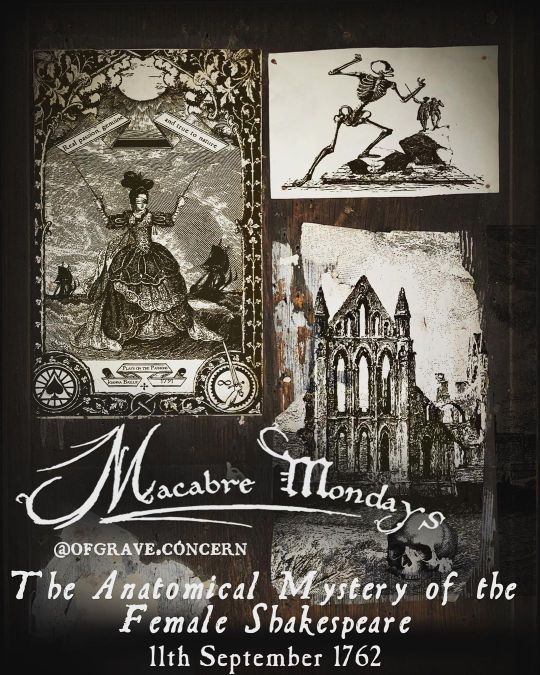
Start not—nor deem my spirit fled: In me behold the only skull From which, unlike a living head, Whatever flows is never dull. Lord Byron, Lines Inscribed Upon a Cup Formed from a Skull (1808) 11th September 1762, birth of Romantic poet and playwright Joanna Baillie, named the ‘female Shakespeare’, by her friend, the poet and novelist Sir Walter Scott. Baillie’s father claimed ancestry from William Wallace, while her mother was the sister of the famed anatomists and physicians William and John Hunter. With an interest in philosophy and the Gothic, Baillie’s work was celebrated during the 19th century, and led to literary friendships with William Wordsworth, Robert Southey, Anna Barbauld and Lord and Lady Byron. Baillie’s gothic work the ‘Plays on the Passions’ first conceived in 1791, detailed the extremity of human passions from love to hate, a recurring motif in her work being that of dead male bodies. Could this be a link to her association with the anatomical work of her uncles? In her 1812 play ‘The Dream’, one of her characters The Prior of a monastery has a large skeleton exhumed from an unmarked grave in the monastery’s vaults. This story has resonance with both her Uncles, and her friendship with Lord Byron. In the early 1800’s, a skull was unearthed by a gardener at Newstead Abbey, the ancestral home of Lord Byron. Byron had the skull turned into a chalice, writing a poem about the skull in 1808. In 1768, Baillie’s uncle John Hunter built his famous anatomy theatre and museum in Great Windmill Street, Soho, London. He is alleged to have paid for the stolen body of Charles Byrne, "The Irish Giant", (Continued in the comments). #regencyera #regencygothic #gothiclit #vintagegothic #darkillustration #historymystery #historymysteries #strangehistory #weirdhistory #macabrehistory #darkhistory #lordbyron #historicalstories #historicalstory #gothicliterature #darkillustration #illustrationartwork #historicalillustration #macabreillustration #gothichistory #gothicfiction #gothicillustration #gothicbeauty #vintageaesthetic #steampunkstyle #anatomy #macabremonday #tarotillustration #historymystery #tarothistory https://www.instagram.com/p/CTxIrg1FMLK/?utm_medium=tumblr
#regencyera#regencygothic#gothiclit#vintagegothic#darkillustration#historymystery#historymysteries#strangehistory#weirdhistory#macabrehistory#darkhistory#lordbyron#historicalstories#historicalstory#gothicliterature#illustrationartwork#historicalillustration#macabreillustration#gothichistory#gothicfiction#gothicillustration#gothicbeauty#vintageaesthetic#steampunkstyle#anatomy#macabremonday#tarotillustration#tarothistory
0 notes
Video
2nd September 1666, around 2am in Pudding Lane in London at the bakery of the house of Thomas Farriner, a fire erupts. London was seeing the last cases from the worst outbreak of the plague that century with 100,000 of its citizens, a quarter of London’s population dead in 18 months. As the city slept, little did they know of what new disaster lay in wait slowly growing around them, and what destruction the ‘Great Fire of London’ would cause. Lasting until September 6th, the fire ultimately destroyed 80% of the medieval city of London, alongside 13,200 houses, 87 churches, and the medieval cathedral of St. Pauls. The fire’s spread and destruction is recorded in the diary of Samuel Pepys, a firsthand account of everyday life during the 17th century. Pepys himself was the first person to inform the king of the fire, according to his diary entry for this day. Historians disagree but one of the aftermaths of the fire was the rebuilding of London, where the plague never returned, is it possible that the fire storm wiped out the fleas and the rats that carried them, as well as the crowded medieval streets that had become their breeding ground since the first outbreak in 1348? Other epidemics in London would take its place, but yersinia pestis never again was able to gain a foothold in the city. Thank you for watching, if you would like more tales of the strange, dark and macabre alongside original artwork inspired by gothic history, please follow @ofgrave.concern #thursdaytales #macabrehistory #darkhistory #macabre #17thcentury #17thcenturyhistory #stuarthistory #houseofstuart #charlesii #historicalstories #historicalstory #englishhistory #britishhistory #thisdayinhistory #onthisdayinhistory #historyofbritain #restorationperiod #londonhistory #historytales #talesfromhistory #interestinghistory #greatfireoflondon #greatfireoflondon1666 #thegreatfireoflondon #greatplagueoflondon #historyoflondon #puddinglane #historicalevents #historyvideo #historyvideos https://www.instagram.com/p/CTU0aIlnHvH/?utm_medium=tumblr
#thursdaytales#macabrehistory#darkhistory#macabre#17thcentury#17thcenturyhistory#stuarthistory#houseofstuart#charlesii#historicalstories#historicalstory#englishhistory#britishhistory#thisdayinhistory#onthisdayinhistory#historyofbritain#restorationperiod#londonhistory#historytales#talesfromhistory#interestinghistory#greatfireoflondon#greatfireoflondon1666#thegreatfireoflondon#greatplagueoflondon#historyoflondon#puddinglane#historicalevents#historyvideo#historyvideos
0 notes
Photo
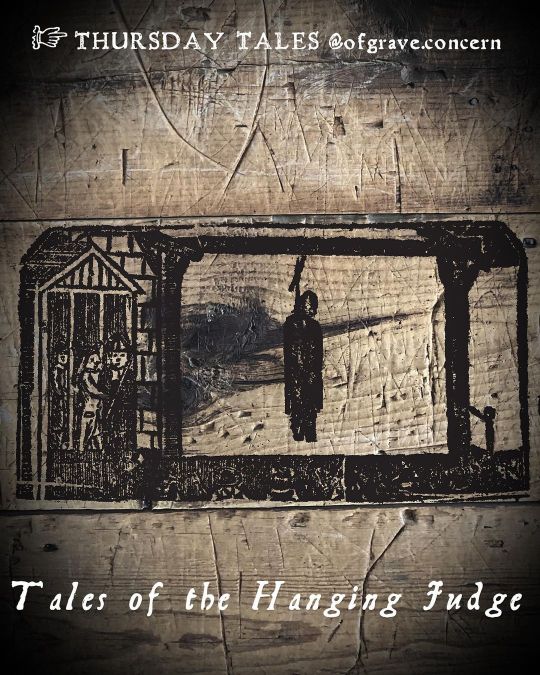
On this day (2nd September) in 1685, Alice Lisle mounted the scaffold and was beheaded, the last woman in England to be judicially sentenced in this manner. Lisle was accused and convicted of harbouring fugitives after the defeat of the Monmouth Rebellion at the Battle of Sedgemoor. Upon the death of Charles II the previous February, his catholic brother ascended to the throne as James II. James II’s reign was opposed by many protestants, especially in the West of the Country. Raising an army, James Scott, 1st Duke of Monmouth, the illegitimate son of Charles II, claimed the throne and attempted to depose James. After the failed rebellion, the participants were tried in Winchester during what is known to history as the ‘Bloody Assizes’ . The trials were presided over by Baron George Jeffreys, known to history as the ‘hanging judge’, for his frequent sentencing of execution. It is estimated that during the assizes, Jeffreys gave the sentence of execution for treason to 700 of those involved, or in Lisle’s case those who had sheltered the fugitives. It is also believed that her sentencing could have resulted from her husband, Sir John Lisle’s involvement as one of the judges in the trial and subsequent execution of James’s father Charles I, at the end of the English Civil War. Therefore her sentence in this case possibly was retroactive vengeance. The Hanging Judge’s actions in this matter were hypocritical at best, now handing out the sentence for execution for those who opposed catholic rule; it had been Jeffrey’s who had freely dispensed the sentence of execution seven years before in 1678, during the ‘Popish Plot’ of the wonderfully named Titus Oates, (continued in the comments). #thehangingjudge #thursdaytales #execution #macabrehistory #darkhistory #macabre #17thcentury #17thcenturyhistory #stuarthistory #houseofstuart #charlesii #historicalstories #historicalstory #monmouthrebellion #jamesii #englishcivilwar #religiouswars #toweroflondon #toweroflondon🇬🇧 #englishhistory #britishhistory #diedonthisday #thisdayinhistory #onthisdayinhistory #historyofbritain #restorationperiod #londonhistory #historytales #talesfromhistory #interestinghistory https://www.instagram.com/p/CTU0AuBHl7f/?utm_medium=tumblr
#thehangingjudge#thursdaytales#execution#macabrehistory#darkhistory#macabre#17thcentury#17thcenturyhistory#stuarthistory#houseofstuart#charlesii#historicalstories#historicalstory#monmouthrebellion#jamesii#englishcivilwar#religiouswars#toweroflondon#toweroflondon🇬🇧#englishhistory#britishhistory#diedonthisday#thisdayinhistory#onthisdayinhistory#historyofbritain#restorationperiod#londonhistory#historytales#talesfromhistory#interestinghistory
0 notes